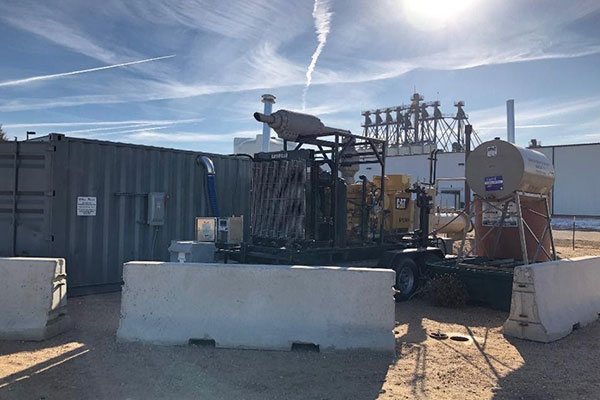
TFE System Development and Site Plan, Greeley, Colorado
Tasman personnel were involved with an extensive subsurface investigation and the development of a full-scale soil and groundwater remediation program at an active oil and gas facility in Greeley, Colorado.
Project Value: $1M
Tasman personnel were involved with an extensive subsurface investigation and the development of a full-scale soil and groundwater remediation program at an active oil and gas facility in Greeley, Colorado. This work was performed on behalf of an oil and gas client in accordance with the applicable regulatory agency.
A historic petroleum hydrocarbon release was discovered below an operating tank battery. The release subsequently migrated into groundwater, measured at approximately 47 feet below ground surface (bgs), prior to its discovery in 2014. Multiple sub-surface investigations were conducted over a period of three years to determine the extent of hydrocarbon impacts in soil and groundwater. It was determined that free and dissolved phase hydrocarbon impacts extended 500 feet off site below a third-party commercial building. In addition, soil impacts within the vadose zone extended vertically from 8 feet to 46 feet bgs.
Based on results of the investigation , Tasman proposed a total fluids extraction (TFE) and soil vapor extraction (SVE) remediation system to address residual impacts to soil and groundwater. Tasman completed the design, fabrication, and complete installation of the TFE/SVE remediation system, in accordance with Class I Div 2 requirements, with the capacity for future air sparge operation. Additionally, the system is designed to treat all extracted water for subsequent reinjection to the aquifer under an EPA UIC Class V Rule Authorization. Vapor-phase extracted hydrocarbon are controlled using a catalytic oxidizer to mitigate volatile organic compound (VOC) discharge to atmosphere.
Following two years of operation, the remediation system successfully treated over 3.3 million gallons of impacted groundwater and extracted over 9,500 pounds of hydrocarbon mass from the sub-surface. The free phase hydrocarbon plume receded over 150 lateral feet and measured free-phase hydrocarbon thicknesses in monitoring wells decreased from 3 feet to less than 1/10 of a foot.

